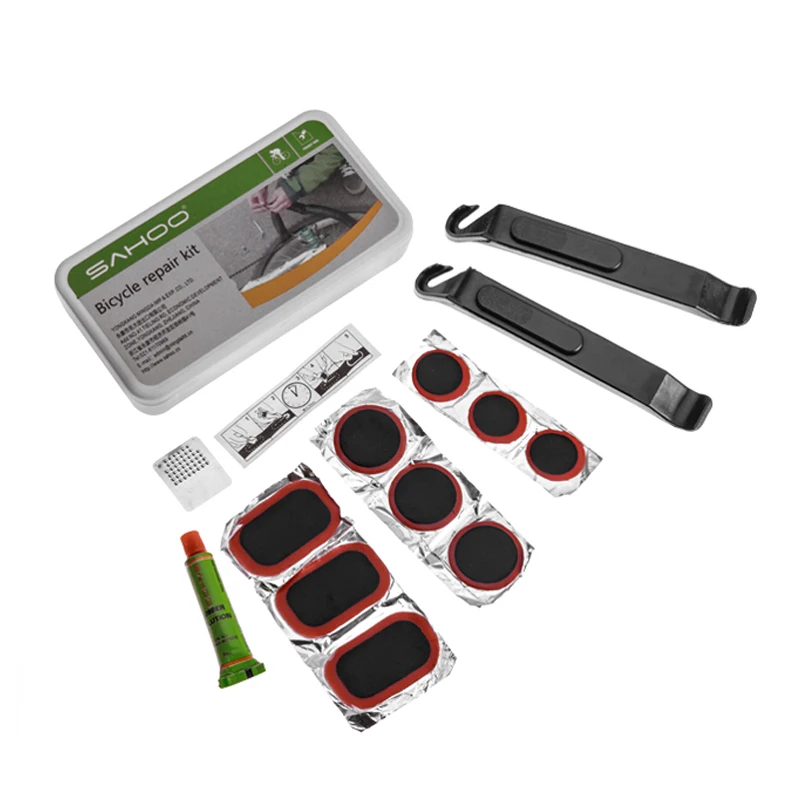We are reader supported and may earn a commission when you buy through links on our site. Learn more
As any wheeled vehicle enthusiast (powered or otherwise) will tell you, the threat of a popped tired is one that always looms if you use your mode of transportation a lot and really rely on it.
Those who prefer to be prepared and don’t mind learning hands-on care tactics for their modes of transportation can take a little extra initiative, however, in purchasing and carrying a tire repair kit. That way, if something does happen and your tire gets punctured, you’ve got what you need to temporarily fix it, at least until you can get home and replace the tire.
Editor’s Choice
Boulder Tools heavy-duty repair kit
Check Price on Amazon
Puncture Repair Kit
Grand Pitstop tubeless tire puncture repair
Check Price on Amazon
universal kit
Tooluxe universal tire repair kit
Check Price on Amazon
Like most things, tire repair kits come in all different ranges and kinds when it comes to their inclusions; you might purchase a basic kit that has only a puncture patch, for example, or you might carry a fully stock reparations kit that will let you change out an entire wheel. We understand that carefully evaluating the perks and drawbacks of all the repair kit possibilities is crucial in figuring out which one actually meets your needs, which is why we’ve been doing some research and collecting options to compare and contrast.
Because we think tire repair kits are so important, we opted to take on some of the responsibility of researching the best kinds out there, just so you know what’s available.
Below is a list of brands and types that we’d absolutely consider ourselves, in hopes that you’ll find the analysis of features helpful in deciding in which kit might be the best investment for you.
If you’re a jack of all trades when it comes to the kind of wheeled vehicle you own or can regularly be found driving, then it’s probably the best idea to invest in a tire repair kit for the pocket of your backpack that’s quite universal and can handle small repairs n just about anything. This all-purpose repair kit from Boulder Tools is the perfect example of what we mean.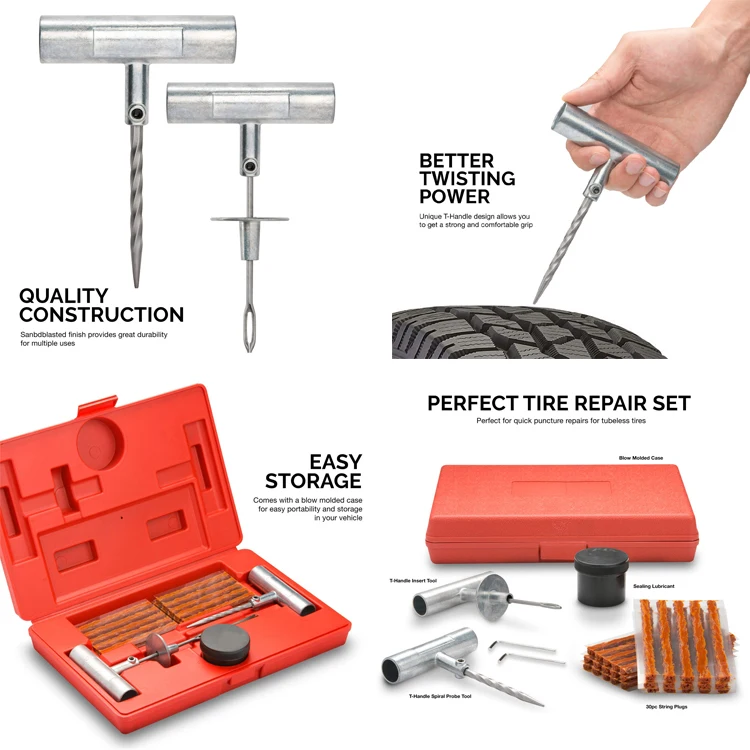 For a reasonable price, this kit features tools in a range of smaller, basic sizes, flat tire plugs, durable full-sized pliers, and a full instructional manual. All the pieces come organized in a durable case, and the whole thing is covered under warranty for a year.
For a reasonable price, this kit features tools in a range of smaller, basic sizes, flat tire plugs, durable full-sized pliers, and a full instructional manual. All the pieces come organized in a durable case, and the whole thing is covered under warranty for a year.
Although this kit can feasibly be used on all kinds of vehicles, ranging from trucks to bikes to ATVs, the limited size and range of the tools clearly make it a more diverse pack for smaller tires and frames. You’ll still benefit from having one of these in your car or truck, but the tasks you can perform with it will be slightly more limited.
View price on AmazonAre you looking for a slightly smaller kit that you can carry a little more space efficiently, but you also need something that’s specifically catered towards use on tubeless tires? Then perhaps this kit from Grand Pitstop is the kind of thing you’re looking for. Whether you’re riding a bicycle or a motorcycle or driving a car, this kit will work on your tires, providing they are a tubeless model, as most are these days. The kit is formulated for ease of use, friendly to beginners, and even intended to enable your repairs without even forcing you to remove the tire first.
The kit is formulated for ease of use, friendly to beginners, and even intended to enable your repairs without even forcing you to remove the tire first.
As reflected by its price, this kit is slightly less thorough in the sheer number of tools it contains. This doesn’t make it a less quality choice for its intended purpose by any means, but it does limit the kinds of additional repairs you can do beyond dealing with punctured tires.
View price on AmazonWere you quite intrigued by the easy-to-use nature and universality of the first kit we showed you, but you couldn’t help wondering if it was almost a little too well stocked and whether you might not actually use all of thing things it had to offer? Then we’re convinced you’d prefer this more basic option from Tooluxe that contains everything you need to repair a punctured tire of any kind, but without all the added extras you saw in the first orange kit. That great durable case is still the same, though!
That great durable case is still the same, though!
The drawbacks to this kit are similar to the first one, but for different reasons. This time, rather than the size of the available tools being what limits some of the repairs you might feasibly face on the road, it’s their absence.
View price on AmazonThis next option from BeTooll might not look like the most thorough kit you’ve seen so far, but it actually is on the better-stocked side in the grand scheme of things. In fact, it contains an impressive 22 pieces all together in that little square case. The whole goal of this kit in its entirety is to be, according to the brand, “simple but complete.” This is partially achieved by the two main tools you see on one side is adjustable in terms of their tips; you can change out what’s there and replace it with a multi-tip piece. All in all, the kit gives you everything you need to temporarily repair a tubeless tire, fitting it all together space efficiently like a puzzle.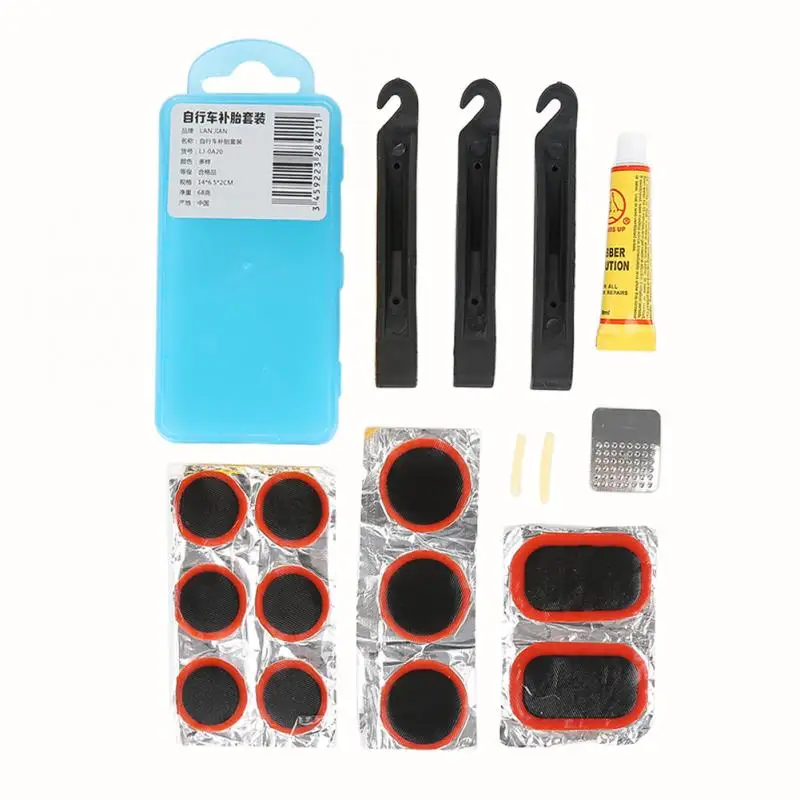
Although this durable little kit was created to be impressively long-lasting from the outset, it does have a warranty. This warranty, however, is very limited; it only covers you for a full refund on any manufacturing flaws you might find upon receipt.
View price on AmazonIf you’re looking for something a little more well stocked and heavy duty, since you’re on the road a lot and you know it takes a toll on your things, then we’d encourage you to check out this kit from Secureguard that’s not only a little more thorough and built for versatility, but also has safety measures in mind. The case, for example, has a neon hazard sign on the front that you can prop up in a visible spot in case you break down at night, ensuring that passing cars will see you and pay your mind. The kit also boasts a pair of durable cloth and rubberized palm gloves that will protect your hands while you work. Besides the hardy steel of the tools themselves, the plugs and even the case that this kit offers you are all built with durability, accessibility, and organization in mind.
Besides the hardy steel of the tools themselves, the plugs and even the case that this kit offers you are all built with durability, accessibility, and organization in mind.
Because this kit was specifically created to be so long-lasting, it’s naturally a bit more of an investment in terms of price. The number is by no means an unjustified one, but it’s not necessarily the case you’d invest in if you’re buying a kit mostly as a precaution and you’re not actually out on your bike, ATV, or whatever else in rough conditions very often.
View price on AmazonIf you thought that a 22-piece kit was a whole lot to take stock of, wait until you see what this bundle from Teccpo has to offer! This kit is actually the largest one we’ve shown you so far, boasting a total of 94 pieces organized expertly into a specific place inside the case. Part of the reason this kit contains so many pieces is that it actually features more of the absolute essentials, like tire plugs to stop leaks.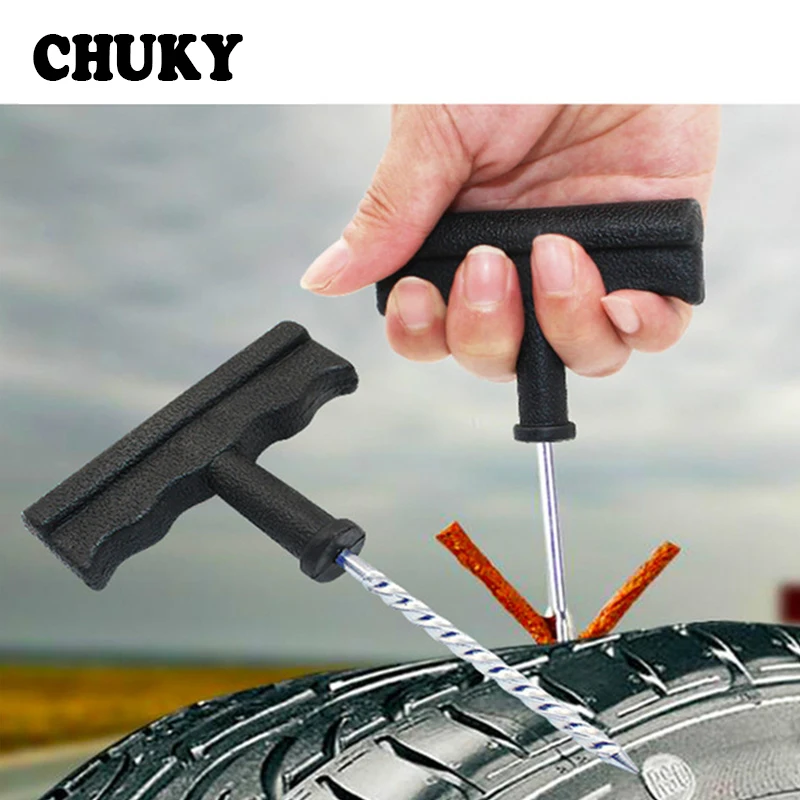 This is due to the fact that, although it’s universal and will work on anything that has tubeless wheels, it’s specifically intended to be kept in your car, as well as to be left there to use again and again, even after you’ve patched up a leak or two.
This is due to the fact that, although it’s universal and will work on anything that has tubeless wheels, it’s specifically intended to be kept in your car, as well as to be left there to use again and again, even after you’ve patched up a leak or two.
Given the number of things it features, this kit is quite impressively priced. Its size is a little bit physically larger, however, making it a less convenient option for those who wanted to buy one kit that they could easily transfer from, say, their car to their mountain bike. Unless you bike with a backpack on and don’t mind a little extra weight, it’s not the most portable choice in the same way that kits intended for riding would be.
View price on AmazonIf you’re aiming somewhere between 22 pieces and 94, because you don’t want to go too big or too small, then perhaps this 56-piece option offered by Rhino USA will be slightly more suitable for your needs.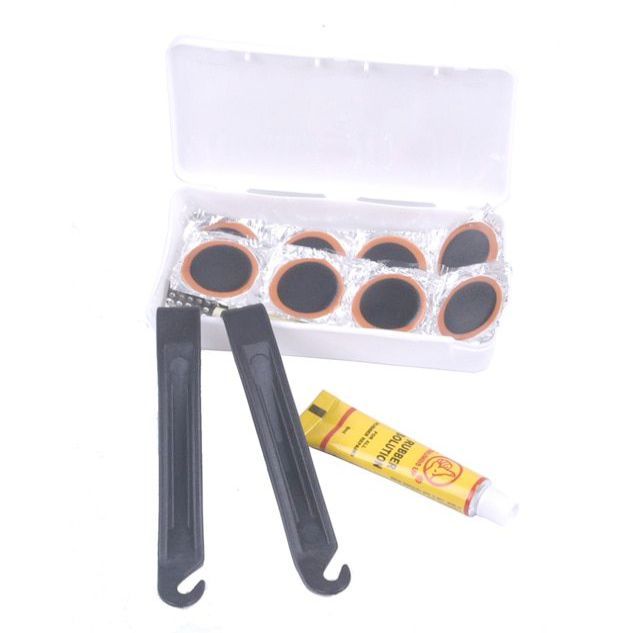 This kit was designed by a small family business and, as a thank you for supporting entrepreneurs, you’re provided with a lifetime warranty on the product. Its entire intention, besides being universal for any tubeless tire, is ease of use. Even if you’re a person who has never plugged a punctured tire before, the layout of the kit, the ease of their tools, and the thoroughness of their instructional manual aim to let you succeed so you’re not stranded waiting for a tow truck.
This kit was designed by a small family business and, as a thank you for supporting entrepreneurs, you’re provided with a lifetime warranty on the product. Its entire intention, besides being universal for any tubeless tire, is ease of use. Even if you’re a person who has never plugged a punctured tire before, the layout of the kit, the ease of their tools, and the thoroughness of their instructional manual aim to let you succeed so you’re not stranded waiting for a tow truck.
Like the larger kit, we showed you earlier, this one isn’t necessarily the most portable or transferrable when it comes to moving it from your car to a bike. Although the durable case is a huge perk in other ways, it makes the wide case rather heavy for riding with, and it doesn’t have any clamps or straps for attaching it to your bike frame directly.
View price on AmazonIf you’re a person who rides only in cars, trucks, and other larger motorized vehicles and doesn’t see any chance of experiencing a puncture on a bike motorcycle, then Autown definitely has you covered.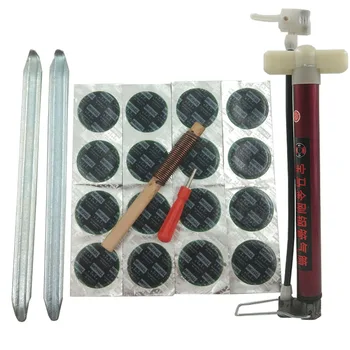 Because you’ll only be carrying the kit in your card, the heavier nature of the filled case and its wider dimensions aren’t necessarily a drawback, given how well-stocked it is. Besides reinforced gloves, this kit features a range of plugs for different kinds of tires (imagine summer versus winter tires, for example). It’s also stocked with tools that are full-sized rather than miniature for smaller vehicles, enabling you to perform other small emergency repairs right there on the road as well.
Because you’ll only be carrying the kit in your card, the heavier nature of the filled case and its wider dimensions aren’t necessarily a drawback, given how well-stocked it is. Besides reinforced gloves, this kit features a range of plugs for different kinds of tires (imagine summer versus winter tires, for example). It’s also stocked with tools that are full-sized rather than miniature for smaller vehicles, enabling you to perform other small emergency repairs right there on the road as well.
Now, when we say that this kit is full-sized, we mean that, unlike many of the others, this case is actually the size of a small toolbox or the kind of case you might find a small power drill in. You’ll be in business if your vehicle has lots of trunk space, but much smaller cars might find keeping it always on hand a little more inconvenient.
View price on AmazonJust in case you’re still looking for a full sized repair kit that’s best used on cars and other large vehicles but you’re the kind of shopper who really likes to compare so that you have more than one similar option to choose from, here’s a comparable but slightly more simplified version of the kit above, courtesy of ARB. The company’s goal in paring down what the kit includes and being a little more selective in the tools was to make things a little more easy to navigate, with each piece having a clear and defined function and place in the repair process.
The company’s goal in paring down what the kit includes and being a little more selective in the tools was to make things a little more easy to navigate, with each piece having a clear and defined function and place in the repair process.
Like the one above, this kit is on the larger side. Additionally, it’s also the most expensive option on our list so far. That’s understandable when the impressively durable and high-quality materiality of what it contains is taken into consideration, but it’s certainly a limitation if you’re working on a budget.
View price on AmazonIf your main priorities in purchasing your repair kids are absolutely speed of use and conservative size, then we think this eye-catching little kit from Slime might be your best choice. Designed to look like and stow away as easily as a small fishing tackle box, this kit holds the convenient minimum in terms of the essentials, boasting a total of only nine pieces inside.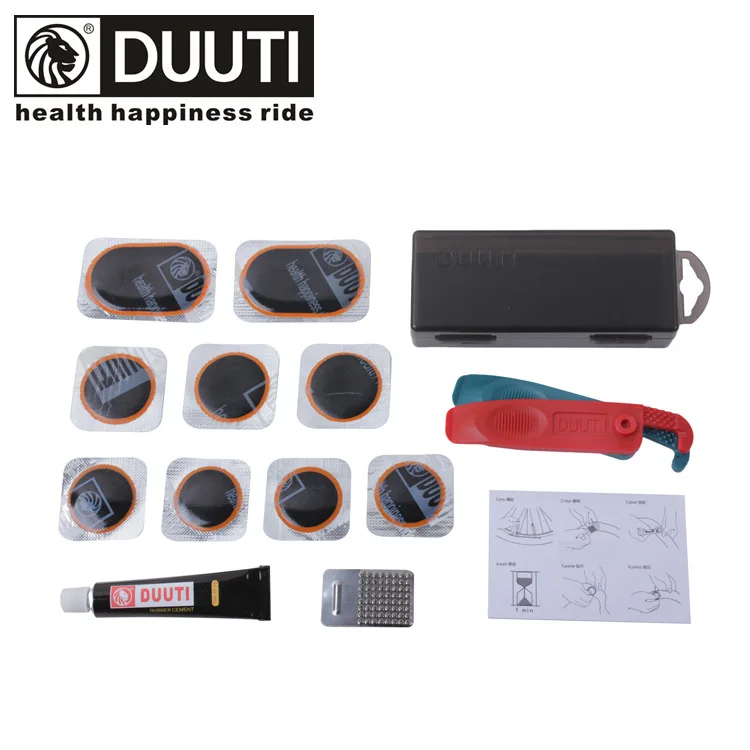 The goal is to provide you with an easy-to-carry kit with a straightforward temporary repair process, all at an affordable price, and that’s precisely what you’re getting when you purchase this piece.
The goal is to provide you with an easy-to-carry kit with a straightforward temporary repair process, all at an affordable price, and that’s precisely what you’re getting when you purchase this piece.
Of course, because it covers only the basics, this kit does work best for smaller forms of transportation, like bikes and motorcycles. It will work on cars in an emergency, but the kinds of other repairs that you can do besides plugging a punctured tire are essentially non-existent; that’s just not what the kit is intended for.
View price on AmazonWhen you began your search for a tire repair kit, were you actually only really looking for a one-use thing that you might put in your glove compartment in case of emergency since you’re a safe driver with only one vehicle? Then this simple package of just the basics and some easy instructions, all provided by Victor might be your best investment. It’s the kind of thing that will absolutely get the job done and gives you the option to repair more than one tire, but it’s by no means a long-term investment or solution.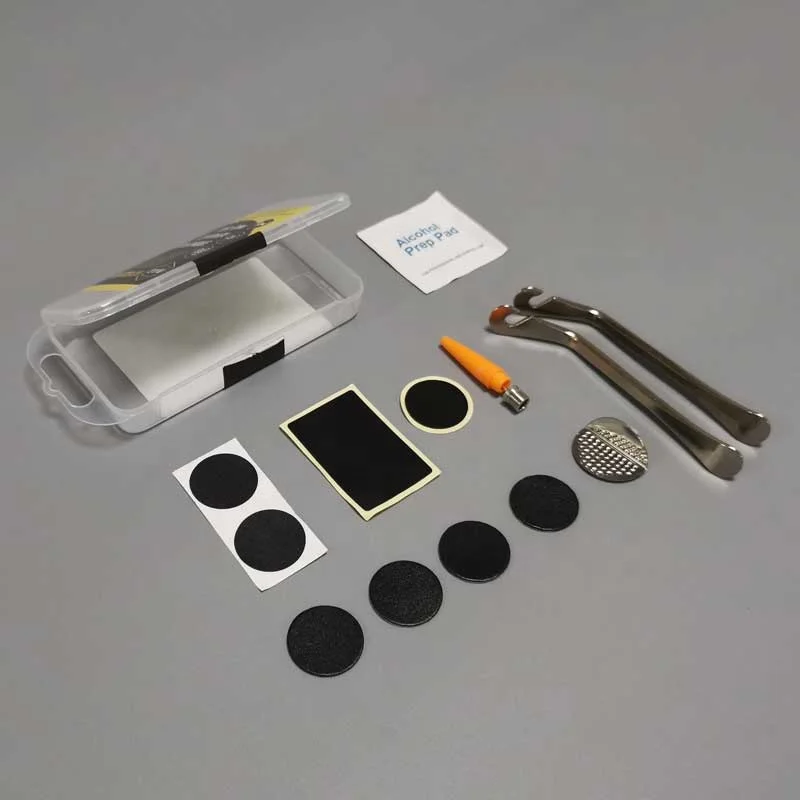 It sure is easy to use, though!
It sure is easy to use, though!
In fact, the kit is so simple that it doesn’t even come with a protective or reusable case. This is part of what accounts for the incredibly affordable price; it’s not even $5!
View price on AmazonWhether you’re a leisure biker who might just ride your secondhand bike calmly in the park to and from work, a mountain biker who rides into the wilderness and rough terrain for hours at a time, or a vehicle driver who relies on their car or truck to get just about anywhere, a tire repair kit is a great emergency tool.
In the event that your tire punctures and is flattened when you’re in a remote area or no one else is around to help you, temporarily patching the hole up so you can minimize the air loss and get yourself to help more safely is something you can do with a tire repair kit. You’ll still have to replace the tire later, but at least you’ll have a chance not to be stranded!
The answer to this question really depends on the kit you’re selecting. There are kits intended for cars and trucks that feature more durable and heavy-duty supplies, while some include smaller versions of common tools that are more appropriately sized for bikes. Some kits will boast full toolsets designed to help you make all different kinds of repairs rather than just those concerning tires, while still others focus mostly on punctures and providing you with patches that will help you stop whatever air is left in the tube from escaping until you can have the whole thing replaced. No matter which kind you get, you’re practicing safe vehicle ownership by making sure that you’re always prepared for the possibility of a tire puncture or similar issue, even if you know it’s not really all that likely.
There are kits intended for cars and trucks that feature more durable and heavy-duty supplies, while some include smaller versions of common tools that are more appropriately sized for bikes. Some kits will boast full toolsets designed to help you make all different kinds of repairs rather than just those concerning tires, while still others focus mostly on punctures and providing you with patches that will help you stop whatever air is left in the tube from escaping until you can have the whole thing replaced. No matter which kind you get, you’re practicing safe vehicle ownership by making sure that you’re always prepared for the possibility of a tire puncture or similar issue, even if you know it’s not really all that likely.
If you ask us, anyone who owns or operates any kind of vehicle that has wheels should keep at least a small or basic tire repair kit on hand at all times. Luckily for all of us, they’re usually quite small and often come with cases that are easily strapped to bike frames or tucked into glove compartments, depending on the kind of vehicle you use most often.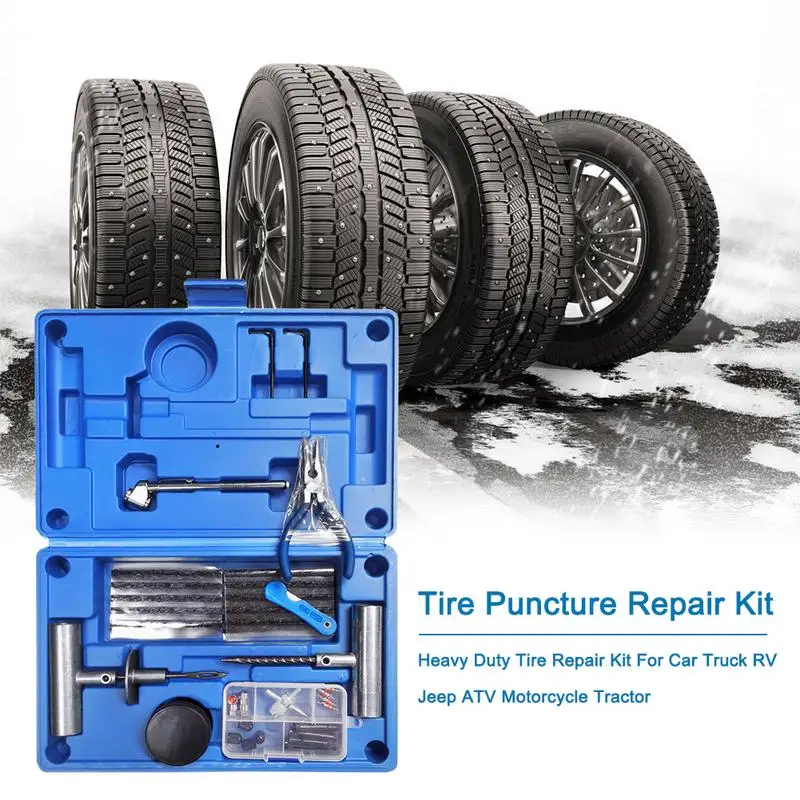 You might not think that you’re likely to use it, but purchasing a tire repair kit is kind of like purchasing insurance; you might never need it at all but, on the rare occasion that you suddenly do, you’ll be very glad indeed that you have it.
You might not think that you’re likely to use it, but purchasing a tire repair kit is kind of like purchasing insurance; you might never need it at all but, on the rare occasion that you suddenly do, you’ll be very glad indeed that you have it.
Of course, any kit that you buy, no matter which one you settle for, will come with full instructions pertaining to that specific model and how it’s best used. In general, though, the process is quite standardized and simple. If whatever punctured your tire is still there, you’ll use your pliers to remove it (just pull it right out). Then you’ll use the sharp, straight tool, called a reamer, to clear the hole and actually make it a little larger so the plug you’re about to put in will fit.
Next, thread the rubber plug or “string” through the hole in your other tool, called the threader. This is the one with the end that looks like the eye of a jumbo needle. You’ll put the end of the rubber piece through just like you would a thread and pull it until the tool is in the center of the rubber piece’s length.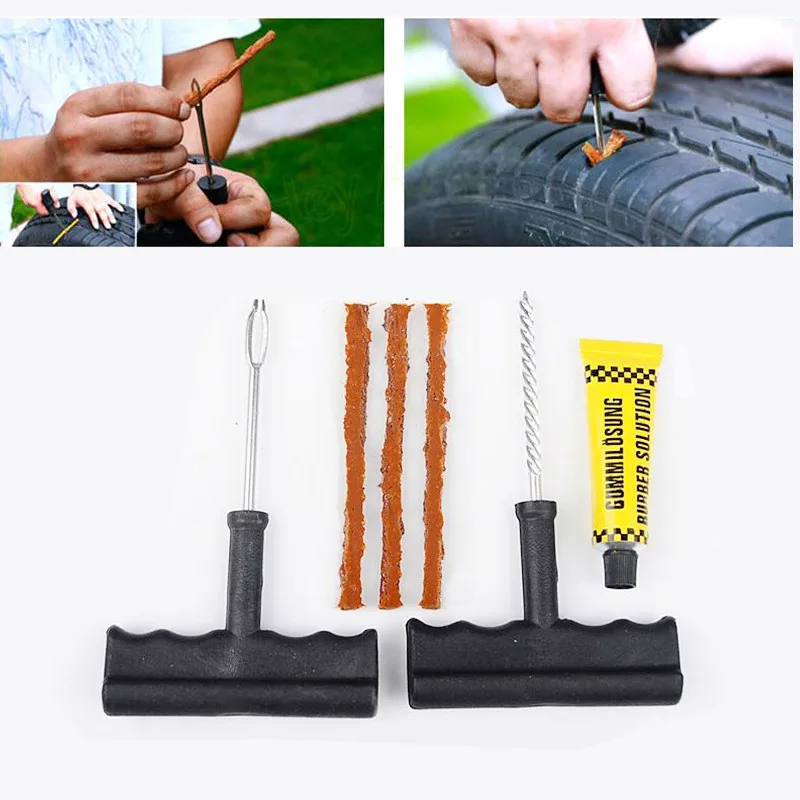 If you have rubber cement in your kit, you can apply it to the length of the rubber piece now (this will afford it a little more durability). Finally, push that threader tool into the hole so the rubber piece doubles over and becomes a plug, filling the hole.
If you have rubber cement in your kit, you can apply it to the length of the rubber piece now (this will afford it a little more durability). Finally, push that threader tool into the hole so the rubber piece doubles over and becomes a plug, filling the hole.
This part requires some force, so push hard. Finish up by pulling the threader tool (sometimes called an extractor) out of the hole nice and harder; the cut in its very end lets it escape the hole while the rubber plug stays wedged in, stopping the air from escaping.
If you have a tire pump, you can refill your air a little bit here; this is best done in combination with a pressure gauge to make sure you don’t overfill the tire and risk it bursting.
In actuality, you can drive on your plugged (or patched) tire for as long as it’ll last until air starts escaping again; some kits will last you months if you installed everything correctly. Whether or not it’s legal to drive with a plugged tire, however, varies from place to place. You’ll certainly be permitted to drive to the next service station or make it home to have your tire replaced, but the laws surrounding whether you can drive with a plugged tire long term are different everywhere, so we’d suggest checking that information out for where you live.
You’ll certainly be permitted to drive to the next service station or make it home to have your tire replaced, but the laws surrounding whether you can drive with a plugged tire long term are different everywhere, so we’d suggest checking that information out for where you live.
Do you know another car, bike, or motorcycle enthusiast who has been thinking about preparing themselves in advance with a good tire repair kit but who also feels like they could use as many suggestions as possible before they make their final decision? Share this post with them so they can weigh their options too!
I chose the best tire repair kits by looking for products that are designed for easy, on-the-road use when tires spring a leak or get punctured. I took a look at many different types of tire repair kits, from plug style to patches, considering options for car tires as well as motorcycle, bike, lawn mower, and ATV and UTV tires.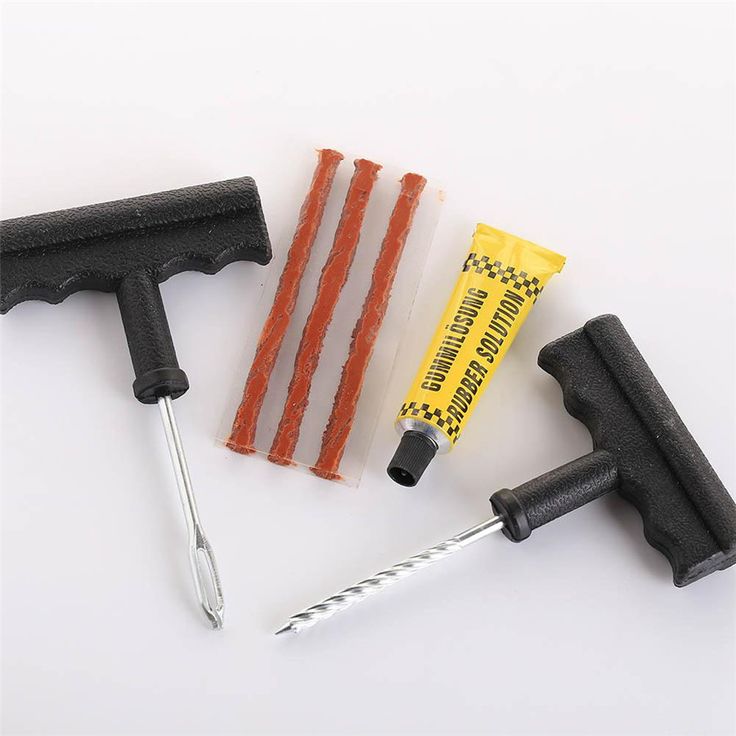 Those that were easy to use and could reliably stop a leak – at least long enough to travel additional miles so you can make it home or to a tire shop – were my top picks, and I looked at the patching style, security, and reported durability to determine which were the best of the bunch. Repair kits that included coverage and items for a variety of different kinds of tire woes were also top choices.
Those that were easy to use and could reliably stop a leak – at least long enough to travel additional miles so you can make it home or to a tire shop – were my top picks, and I looked at the patching style, security, and reported durability to determine which were the best of the bunch. Repair kits that included coverage and items for a variety of different kinds of tire woes were also top choices.
Our reviews are driven by a combination of hands-on testing, expert input, “wisdom of the crowd” assessments from actual buyers, and our own expertise. We always aim to offer genuine, accurate guides to help you find the best picks.
Learn more
Best Value: Pittsburgh Automotive Radial Tire Patch Kit
Honorable Mention: Husky T-Handle Tire Repair Kit
Best Comprehensive: Smittybilt Tire Repair Kit
When it comes to tough tires and dependable repairs, the Rhino USA Tire Repair Kit is your top choice.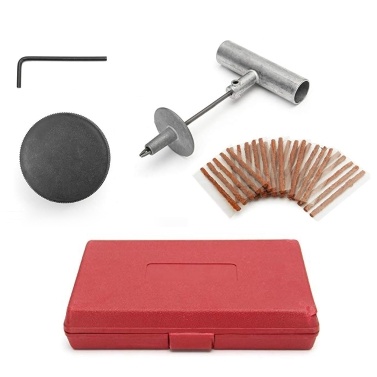 This kit is versatile and highly capable, providing repairs for tire punctures of all kinds. It’s comprehensive, providing you with durable, heavy-duty plugs as well as well-built tools that’ll make repairs a little easier. Featuring 86 pieces packaged in a convenient and compact storage kit, you’ll have everything you need to quickly plug up tire problems, seal them, and get back on the road without waiting for a tow. The entire process is simple enough that it takes just 15 minutes to get you driving safely once again. And it’s a suitable fix for everything from your car tires to your RV tires to bike, lawnmower, and off-road vehicle tires.
This kit is versatile and highly capable, providing repairs for tire punctures of all kinds. It’s comprehensive, providing you with durable, heavy-duty plugs as well as well-built tools that’ll make repairs a little easier. Featuring 86 pieces packaged in a convenient and compact storage kit, you’ll have everything you need to quickly plug up tire problems, seal them, and get back on the road without waiting for a tow. The entire process is simple enough that it takes just 15 minutes to get you driving safely once again. And it’s a suitable fix for everything from your car tires to your RV tires to bike, lawnmower, and off-road vehicle tires.
However, it’s important to remember that this kit is only meant to be used on tubeless tires.
Pittsburgh Automotive Radial Tire Patch Kit
Check Latest Price
With a budget-friendly price and an incredibly easy application method, the Pittsburgh Automotive Radial Tire Patch Kit is a great value pick. In this affordable kit, you’ll get a selection of 56 rubber patches in sizes from 1 inch to more than 4 inches and in various shapes. Plus, this kit also includes two tubes of rubber cement for a strong, secure patch seal and two small metal scuffers to ensure your patches can properly adhere to the tire. With a little roughing up and the strongly adhesive rubber cement, these patches should cover tears and punctures fast. And best of all, there are enough to cover many kinds of tires. These patches work on any radial tire, but they’re also a quick fix for bike tires, inflatables, rafts, and more.
In this affordable kit, you’ll get a selection of 56 rubber patches in sizes from 1 inch to more than 4 inches and in various shapes. Plus, this kit also includes two tubes of rubber cement for a strong, secure patch seal and two small metal scuffers to ensure your patches can properly adhere to the tire. With a little roughing up and the strongly adhesive rubber cement, these patches should cover tears and punctures fast. And best of all, there are enough to cover many kinds of tires. These patches work on any radial tire, but they’re also a quick fix for bike tires, inflatables, rafts, and more.
The only drawback is that these patches tend to work best on smaller tires. While they’re technically suitable for use on all radial tires, the best performance isn’t found on heavy-duty tires or tougher, thicker off-road tires.
Husky T-Handle Tire Repair Kit
Check Latest Price
The Husky T-Handle Tire Repair Kit is a great all-in-one kit that’ll have you covered no matter what you happen to roll over on the road. With tools and sealing solutions that work for both punctures and tears, this comprehensive option includes plugs and patches for every kind of seal. It’s got both tire plugs and tire patches, plus a tube of rubber cement for sealing, a tire rasp, a tube scuff pad, and insertion tools so you have everything you need in one compact kit that stashes in your glove compartment. These assorted tools are made for roadside use, and their design cues, like a pistol grip design on the tools and handheld scuff pad, are comfortable though small.
With tools and sealing solutions that work for both punctures and tears, this comprehensive option includes plugs and patches for every kind of seal. It’s got both tire plugs and tire patches, plus a tube of rubber cement for sealing, a tire rasp, a tube scuff pad, and insertion tools so you have everything you need in one compact kit that stashes in your glove compartment. These assorted tools are made for roadside use, and their design cues, like a pistol grip design on the tools and handheld scuff pad, are comfortable though small.
Unfortunately, the tools require quite a lot of strength to use properly, and getting plugs and patches in place can be a challenge for some users. It’s also somewhat tough to get a secure enough seal to prevent slow leaks, so you’ll only want to rely on this repair kit for a quick fix to get to the shop.
When it comes to small vehicles and smaller tires, a set of Slime Patches with Rubber Cement is a handy tool to keep nearby.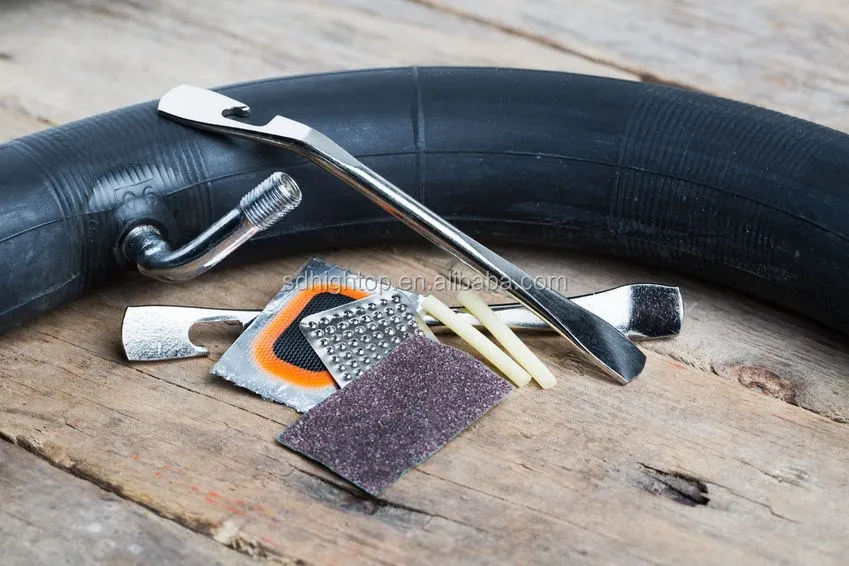 This tire repair kit includes 56 patches, with a selection of rounded rectangle, round, square, and rectangular patches in sizes from 21 mm to 75 mm. Plus, those patches come with a pair of tire scuffers to rough up the rubber for better adhesion and two tubes of strong rubber cement. Made specifically for puncture-related flats on the tires of ATVs, lawnmowers, bikes, and similar vehicles, you can apply your tires easily and get a longer lifespan out of them, and this kit includes plenty of patches for multiple repairs over time.
This tire repair kit includes 56 patches, with a selection of rounded rectangle, round, square, and rectangular patches in sizes from 21 mm to 75 mm. Plus, those patches come with a pair of tire scuffers to rough up the rubber for better adhesion and two tubes of strong rubber cement. Made specifically for puncture-related flats on the tires of ATVs, lawnmowers, bikes, and similar vehicles, you can apply your tires easily and get a longer lifespan out of them, and this kit includes plenty of patches for multiple repairs over time.
This kit is not meant for use on car or truck tires. It’s designed for smaller vehicles such as ATVs, UTVs, lawnmowers, and bikes. Additionally, because the patches and rubber cement need to sit and set for a while, you shouldn’t expect to be able to slap a patch on and get back to work.
If you need a tougher solution for off-road tires, the GlueTread External Patch Kit might be your best bet.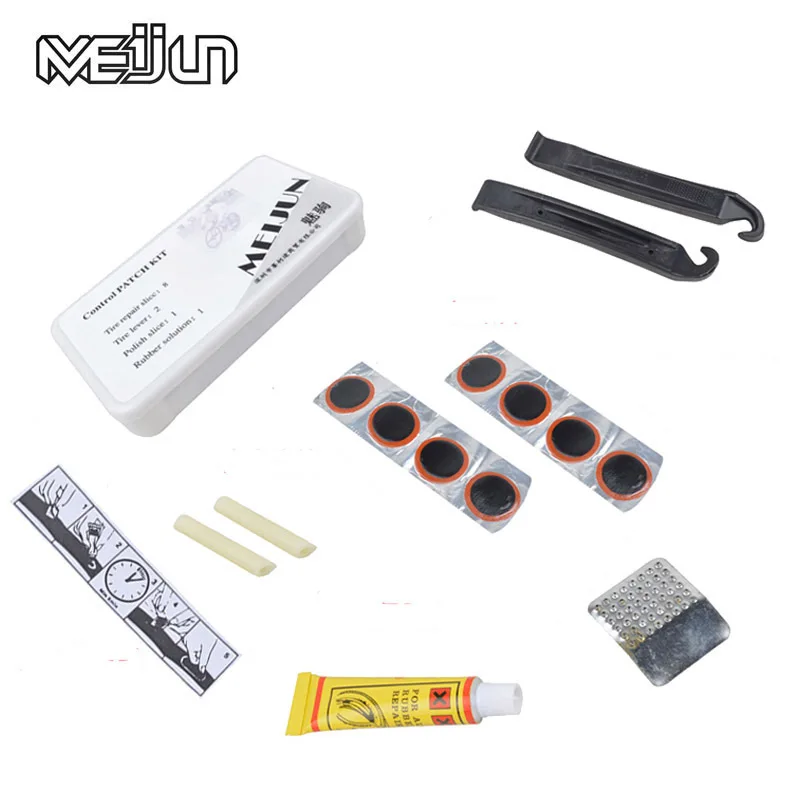 Made specifically for repairs on off-road tires, this kit is able to stop leaks, cover punctures, and fix tears. You can use these rubber compound patches on all types of off-road tires, whether you’re driving a car, crossover, or ATV. Meant to be extra easy to apply, these patches come with durable GlueTread adhesive, which dries and bonds in just minutes. Plus, they’re so easy to apply that you don’t need any special tools (aside from the included sandpaper), and you don’t have to remove your tires or wheels. As an added bonus, there’s so little down time that you can repair your tire and get back to normal use the very same day.
Made specifically for repairs on off-road tires, this kit is able to stop leaks, cover punctures, and fix tears. You can use these rubber compound patches on all types of off-road tires, whether you’re driving a car, crossover, or ATV. Meant to be extra easy to apply, these patches come with durable GlueTread adhesive, which dries and bonds in just minutes. Plus, they’re so easy to apply that you don’t need any special tools (aside from the included sandpaper), and you don’t have to remove your tires or wheels. As an added bonus, there’s so little down time that you can repair your tire and get back to normal use the very same day.
The only disadvantage of this tire repair kit is it doesn’t include a lot of patches. With just two of each patch size, you won’t be able to make more than four total repairs; you may need to purchase a second if you’re prone to punctured or torn tires.
Smittybilt Tire Repair Kit
Check Latest Price
The Smittybilt Tire Repair Kit has it all.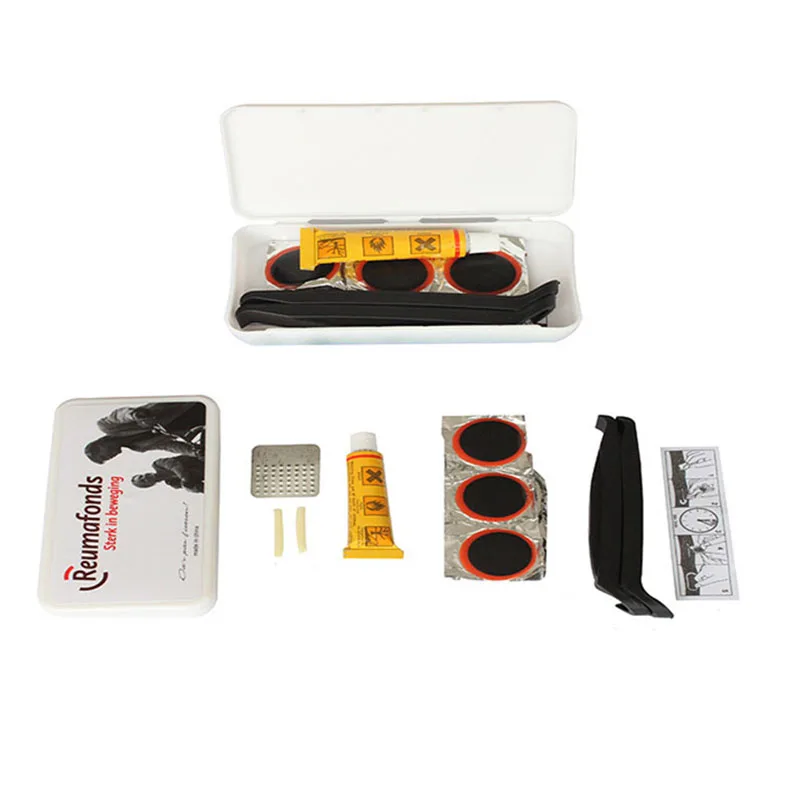 Whether you’re in need of a set of plugs to stop puncture leaks or want to patch up your tire from the inside to fix damage, this set includes everything you need. And there’s no rubber cement required to get the job done. Featuring an array of tools that includes lubricant, a folding knife, needle nose pliers, and a tire pressure gauge, you’ll get both interior tire batches and a set of self-vulcanizing plugs that bond with your tire’s rubber compound. This kit’s items are tough enough for car and truck use, but they’ll also work well for trailers and off-road vehicles. The entire kit is compact and lightweight, with tools made from aluminum so it’s easy to carry anywhere.
Whether you’re in need of a set of plugs to stop puncture leaks or want to patch up your tire from the inside to fix damage, this set includes everything you need. And there’s no rubber cement required to get the job done. Featuring an array of tools that includes lubricant, a folding knife, needle nose pliers, and a tire pressure gauge, you’ll get both interior tire batches and a set of self-vulcanizing plugs that bond with your tire’s rubber compound. This kit’s items are tough enough for car and truck use, but they’ll also work well for trailers and off-road vehicles. The entire kit is compact and lightweight, with tools made from aluminum so it’s easy to carry anywhere.
As with many other plug and puncture repair kits, this tire set comes with some challenges. Its tools and its plugs can be difficult to securely seal up. You’ll need hand strength and force to get the job done.
The Rhino USA Tire Repair Kit is your best bet for fixing tire punctures on the road, with a set of highly versatile repair items and tools that can withstand wear once applied.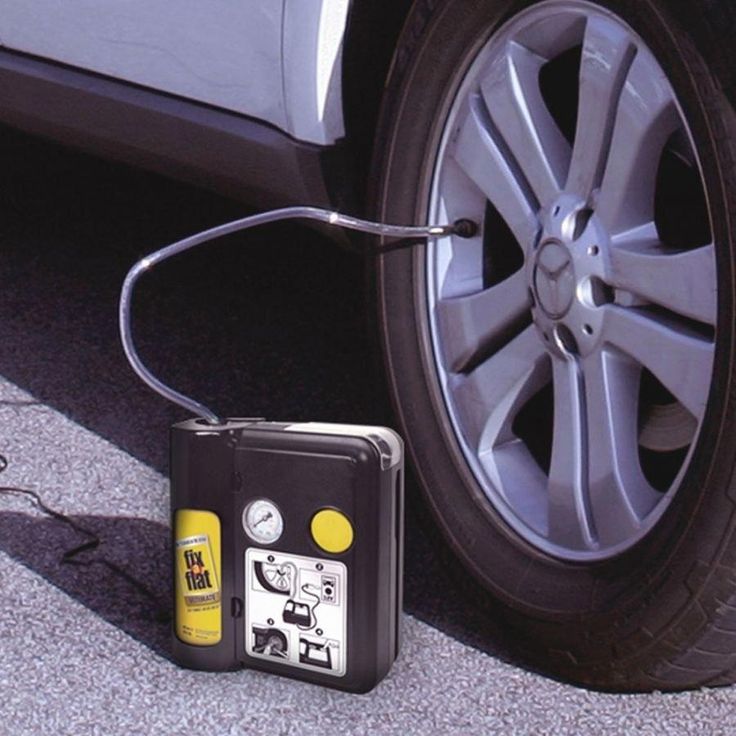 However, if you’re looking for an affordable price and super speedy fixes, the Pittsburgh Automotive Radial Tire Patch Kit is another great value-rich pick that includes patches alone.
However, if you’re looking for an affordable price and super speedy fixes, the Pittsburgh Automotive Radial Tire Patch Kit is another great value-rich pick that includes patches alone.
Before you grab any set of tire patches, know what qualities and components make for a quality tire repair kit. Here’s what to think about as you’re equipping your vehicle with a kit that’ll help you perform quick tire fixes.
Tire patches are simple; they’re pieces of rubber with adhesive backing. When your tire gets punctured or torn, you can stick a patch over the problem area to reseal the rubber. Patches can provide a strong, lasting seal, but they do have limitations. They require a bit more work to get in place, and they can’t be used for sidewall holes, big holes and punctures, or other not-straight, oddly located problem spots.
Tire plugs are made for punctures and holes rather than tears, rips, or similar tire issues. Slim strips made out of leather and rubber compounds, tire plugs are inserted into a hole with a handy tool (which is usually included in the kit) to create a seal on the inside of the tire. Plugs are ideal if you’ve rolled over a nail, screw, or similarly sized item, as they can fix small holes. However, they can be tough to use correctly, and like patches, they have limitations when it comes to sidewall holes, flat tires, and bubbled areas of rubber.
An all-in-one tire repair kit is exactly what it sounds like: A single solution that includes everything you need to both patch and plug your tires. These more expansive kits include tire plug strips and tools, plus tire patches. They can also include additional accessories meant to make roadside repairs easier and quicker. These are a great item to keep in your emergency kit.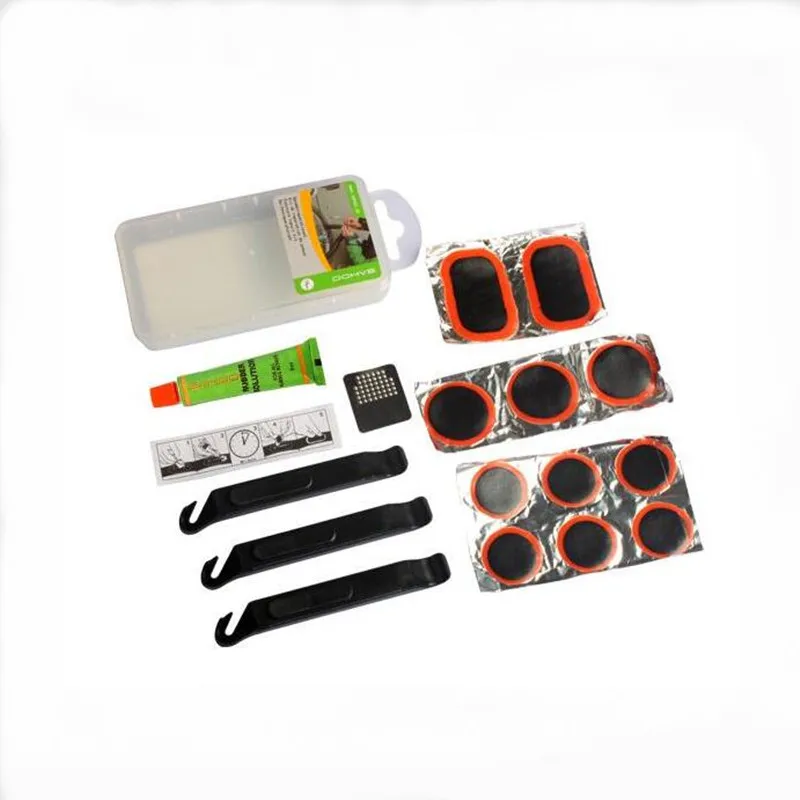
Tire repair kits are usually affordable. If you’re looking for patches that’ll repair smaller tires, such as tubeless bike tires, lawnmower tires, or even ATV and UTV tires, you can get a set of two to 10 patches for $2 to $15. Typically, these patches cost less than $10. For car tires, you’ll spend a little more; patches alone can run between $5 and $20. And if you want comprehensive tire repair, you can find all-in-one kits that include both patches and plugs, plus any tools you need to stop leaks or fix punctures, for $20 to $35.
You’ve got questions. The Drive has answers.
A: As long as they’re used correctly and you follow the instructions, tire repair kits shouldn’t ruin your tire. Most of these products are meant to be a temporary fix for damaged tires, so you’re going to ultimately need to replace your tire in the long run.
A: While tire plugs might seem more secure than a rubber patch you stick on, patches are actually considered the most durable repair option. Sure, plugs are a reliable fix, but tire repair patches last longer and tend to stay securely in place better.
A: Quick tire fixes aren’t meant to be used for long-distance driving. Whether you’ve applied a tire plug or tire patch, it’s best to only rely on these repairs for a few miles.
A: Patches can safely cover holes up to a quarter-inch long in your tire. Anything bigger, and a quick patch fix likely won’t be as secure or hold in air as well.
Slime Pro-Series Flat Tire Repair Kit Operating Instructions
CAUTION! Carefully read all the instructions
Non -compliance with warning instructions can lead to fire, personal injuries or damage to the property
Attention: Hot • Do not hold in your hands during work • Place the inflator on a hard clean surface.
Check the tire warranty before installing this product.
NOTE: Seals up to 1/4 in. (6 mm) punctures in the tread area for flat tire repairs. The correct tire pressure can be found in your vehicle owner's manual or on the driver's side door jamb.
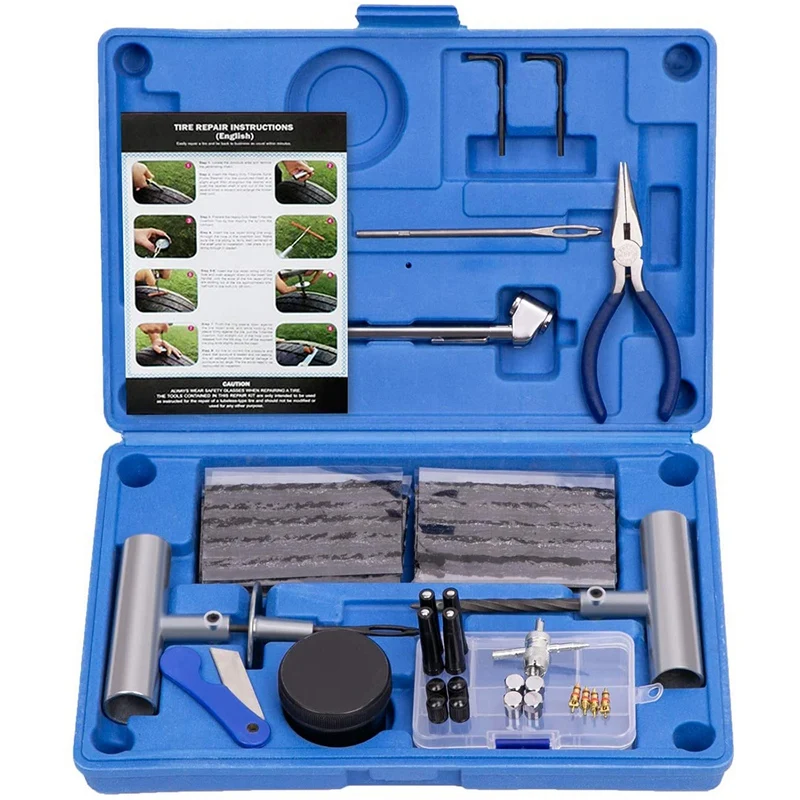 Press the power button to start inflation. When the pressure gauge reaches the set value, the inflator automatically stops inflation. Once the desired tire pressure has been reached, disconnect the air hose and unplug the power cord. The ON/OFF button can be used to override the preset pressure value if needed.
Press the power button to start inflation. When the pressure gauge reaches the set value, the inflator automatically stops inflation. Once the desired tire pressure has been reached, disconnect the air hose and unplug the power cord. The ON/OFF button can be used to override the preset pressure value if needed. Drive two miles at less than 25 mph to distribute the sealant throughout the tire, allowing the puncture to be found and sealed. Check the tire pressure again to make sure the puncture is sealed.
Slime® provides fast emergency repairs. Treated tires should be repaired by a qualified tire technician at the earliest opportunity to ensure safety and proper cleaning of the tire pressure sensor, if any. We recommend repairing a treated tire within 3 days or 100 miles after using Slime Tire Sealant, whichever comes first. Inform the tire changers about the use of the product.
AIR ONLY mode can also be used for bicycles, sports balls, rafts and other inflatable boats.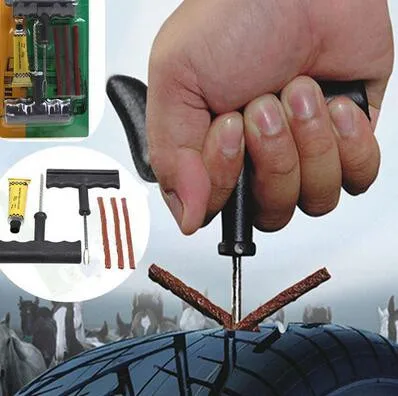

IMPORTANT! When using the supplied inflatable adapters, the valve depressor adapter (fig. X) must be used with the inflatable adapters. Failure to use the supplied valve depressor adapter with inflatable adapters will result in excessive pressure and failure of the flat tire repair kit. To install, remove the valve depressor adapter assembly from the back of the flat tire repair kit. Unscrew the Presta valve adapter and set aside. Screw the valve depressor adapter into the air hose of the flat tire repair kit (fig. Y) as far as it will go. Push the desired inflatable adapter all the way in and inflate the object.
PRESSURE RELIEF provides optimum psi pressure. Press on the area to deflate the tire if it was over-inflated or there was too much air before inflating. Check your pressure gauge for the desired PSI level. NOTE. The correct tire pressure can be found in your vehicle owner's manual or on the driver's side door jamb.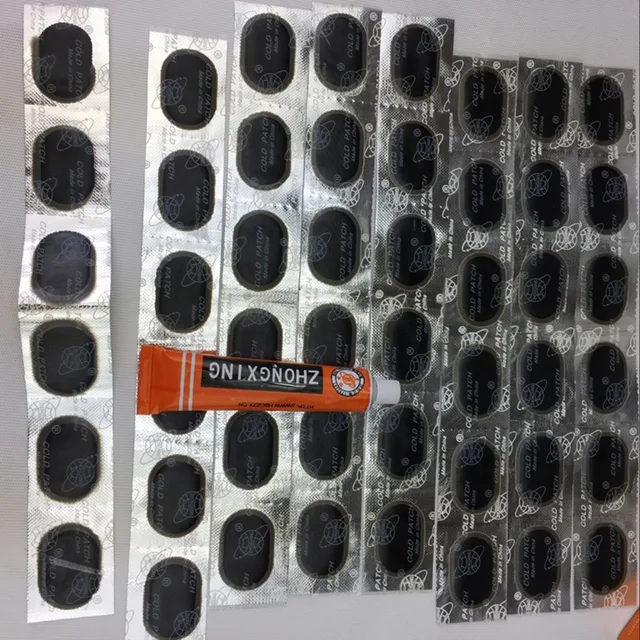
The inflator does not work when connected to the mains:
Inflator works but does not inflate:
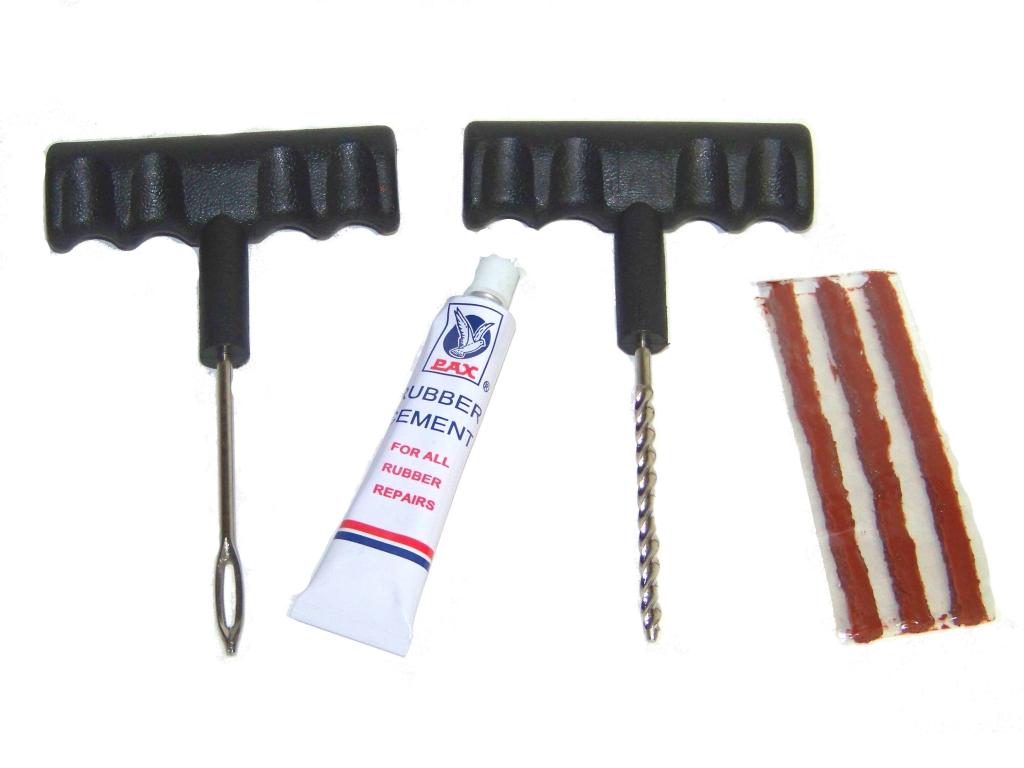
Inflator running slowly:
NOTE: If the tire is completely flat, it is possible that the tire may separate from the rim, causing air to leak when you try to inflate it. In the event of such a situation, you will have to raise the tire before inflating. Dispose of this product at an e-waste point or facility. Do not dispose of in the trash or standard recycling container.
WARNING: IS HARMFUL OR DEATH IF SWALLOWED. IRRITANT TO SKIN AND EYES. Avoid swallowing and inhalation. Avoid contact with eyes and skin. Wash your hands after use. Use only as directed. KEEP OUT OF THE REACH OF CHILDREN.
FIRST AID : In case of contact with eyes, flush eyes with cool water for 15 minutes, occasionally lifting eyelids.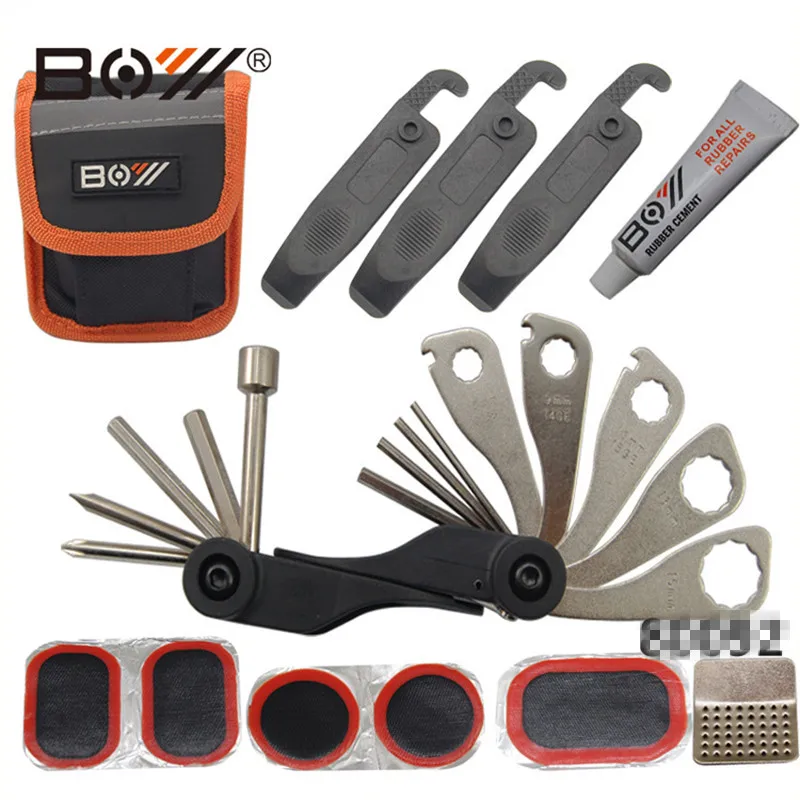 In case of contact with skin, wash off with soap and water. When inhaling, look for fresh air. If swallowed, DO NOT VOMIT; drink plenty of water and see a doctor or hospital. Contains ethylene glycol and natural latex rubber.
In case of contact with skin, wash off with soap and water. When inhaling, look for fresh air. If swallowed, DO NOT VOMIT; drink plenty of water and see a doctor or hospital. Contains ethylene glycol and natural latex rubber.
Call HimTel : +1-800-255-3924 or 1-813-248-0573
Reference product name : Article No. 50150 or No. 10179 V1D (reserve)
Exchange cartridges with sealant • Article No. 10179
Warranty Information: www.slime.com/ Garantiy 9000 9000 9000 COMMENTS
QUESTIONS OR COMMENTS : Call 1-888-457-5463 or visit www.slime.com
ITW Global Tire Repair • 125 Venture Drive, Suite 210, San Luis Obispo, CA 93401 US
Slime® is a trademark of Illinois Tool Works, Inc., registered in the US and other countries.
Author: Kirill Savchenko
How long ago did you check your tire pressure? Most likely never, or sometime a very long time ago. The classic approach is to set the notorious 2.2 atmospheres every six months at a tire fitting and, at best, determine “by eye” whether the wheel has flattened. Of course, the impact on handling and safety with a small deviation from the norm is difficult to catch, but half-flat tires wear out much faster than inflated ones. So, do you still need to measure the pressure? And how! And it's easier than you think.
The first tire pressure monitoring systems appeared in the 20th century with the military. The wheels of various tractors and infantry fighting vehicles were connected to a common pneumatic circuit of the vehicle.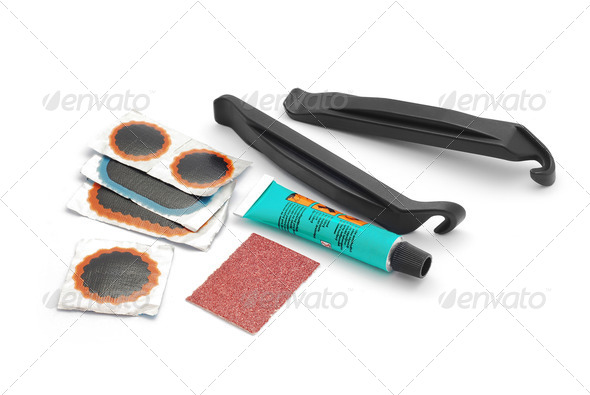 Naturally, mechanical pressure gauges monitored the pressure in it. In which case, the driver could, without being distracted from the combat mission, pump up the wheel remotely, based on the readings of the instruments, by opening a special valve.
Naturally, mechanical pressure gauges monitored the pressure in it. In which case, the driver could, without being distracted from the combat mission, pump up the wheel remotely, based on the readings of the instruments, by opening a special valve.
Later, some of these pressure control technologies also migrated to civilian vehicles, but in electronic form. This happened after the invention of the ABS system. Back in the late 80s, remote monitoring of tire pressure was used on luxury European cars. In the US, the first car with TPMS (Tires Pressure Monitoring System) was the Chevrolet Corvette 1997, after which the technology went into mass production. The first systems were quite simple.
A flat tire has a smaller diameter and travels less distance per unit time than an inflated one. The standard sensors of the anti-lock braking system recorded this and, in which case, transmitted information to the ABS control unit. The disadvantage of the design is that the error in the data is up to 30%.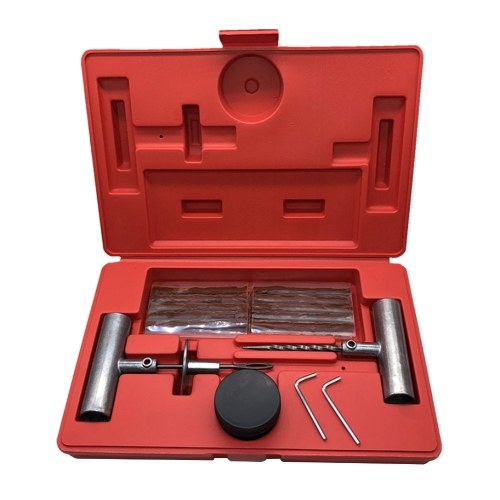 In addition, these figures were not absolute, but only calculated based on the initial calibration of each wheel. In the case of using tires of other models or sizes, the entire TPMS system had to be reprogrammed, that is, new parameters had to be set for the correct operation of the TPMS Block / System.
In addition, these figures were not absolute, but only calculated based on the initial calibration of each wheel. In the case of using tires of other models or sizes, the entire TPMS system had to be reprogrammed, that is, new parameters had to be set for the correct operation of the TPMS Block / System.
Much more accurate designs using absolute air pressure values. By the way, if it weren’t for the appearance in the 21st century of such wireless digital data transfer protocols as Bluetooth or Wi-Fi, because digital pressure data must somehow be remotely transmitted, then TMPS in its modern form could not be dreamed of.
But this is only one part of the solution. The second was to develop compact pressure sensors and provide them with energy. Initially, the devices were built into the central recess on the inner surface of the disk and fixed with adhesive tape. Later there were systems connected to the valve or mounted instead of it, but their initial weight reached a considerable 50 g.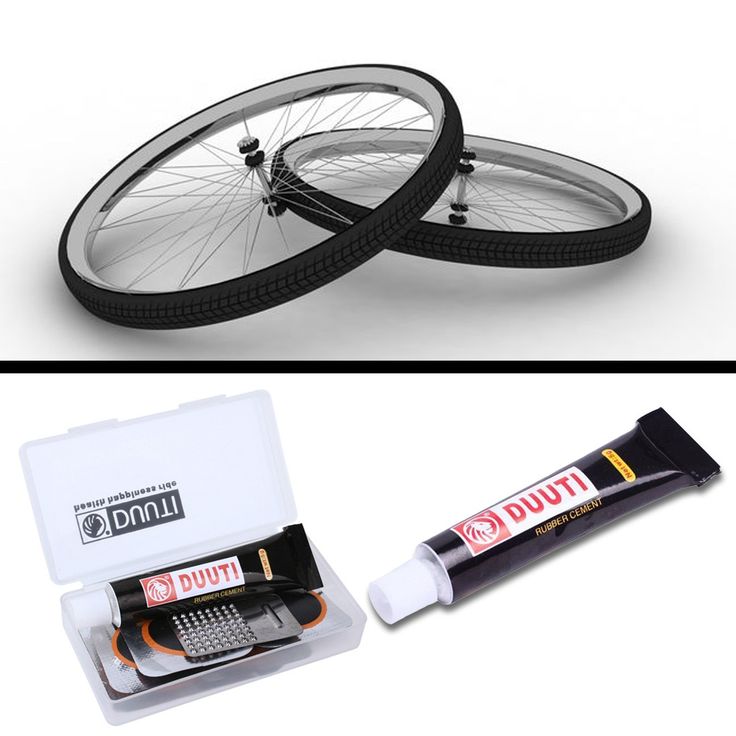
By today's standards, a lot, so the struggle began to reduce the weight and dimensions of the sensors, as well as their batteries. To date, the mass of devices for each wheel does not exceed 20 g, and in the near future, manufacturers promise to further reduce it and expand the functionality.
Things have come to the point that, in addition to the standard sensors installed by car manufacturers, kits have entered the market that can be installed on any car. Their cost is from 25 to 150 dollars. Both with internal sensors and with external ones, which are screwed onto the nipple instead of a protective cap. Any of the options can be supplied in specialized tire services or on your own - subject to confidence in your knowledge.
The difference between the standard and non-standard device is small. In the first case, the information is displayed on the display of the car's on-board computer. In the second, the response device is connected to the cigarette lighter or any other power source.
As a rule, not only pressure data, but also temperature data are transmitted to the remote non-standard unit. Another option is to transfer data to a smartphone. There are kits that work with both Android and iOS. Most often these are non-standard kits made in China, which, however, does not always indicate their low quality.
The main problem is that each of the sensors needs to be “married” to the receiving unit and calibrated in accordance with the tire and wheel size used. The fact is that each car manufacturer has its own pressure control system and the protocols are often different. Also, the TPMS sensor has its own unique ID number, which should correspond to the "Tyre Pressure Monitoring System Control Module". Therefore, they need to be adapted and programmed to work properly. Most often this is done using a special programmer, in which the parameters of the wheels used for the most popular car models are sewn. But they can also be entered manually.
The service life of the kit is 5-10 years, batteries - several years, depending on the operating conditions. Sensors can be changed individually, the main thing is that they correlate with the receiving device. However, for the system to work, the sensors must be monitored and properly maintained. In particular, periodically replace the valve. Also, problems such as accelerated battery discharge, damage to the sensor when driving on a completely flat tire, leakage, and much more are possible. Troubleshooting is better in specialized services.
Sensors can be changed individually, the main thing is that they correlate with the receiving device. However, for the system to work, the sensors must be monitored and properly maintained. In particular, periodically replace the valve. Also, problems such as accelerated battery discharge, damage to the sensor when driving on a completely flat tire, leakage, and much more are possible. Troubleshooting is better in specialized services.
It would seem, why is all this necessary? The leading American company for the production of pressure control systems, Schrader, cited figures from a study by the US National Highway Traffic Safety Administration (NHTSA) from 2012: before the mandatory introduction of TPMS in cars, under-inflated tires annually provoked about 250,000 accidents. About 660 people died in them and about 33 thousand more were injured. With the advent of pressure sensors, the number of accidents due to tire pressure has dropped to 8,500 and the death toll to 120 per year.
But the NHTSA gives other data. Due to reduced tire pressure, about 16,000 tons of fuel are consumed daily. All this hits not only the environment, but also the wallet of car owners. And much more than installing a set of TPMS sensors.
Expert's comment
Alexander Golubev
expert "SHINSERVICE"
In Russian conditions, pressure sensors are an absolutely necessary thing. Given the distances and large one-time runs, the driver can only notice a critical loss of tire pressure. And this most often leads to their damage and the impossibility of further operation. In our company, it is possible to install pressure sensors on almost any car. It is better that it be equipped with alloy wheels, but we also install sensors on stamped models.
We currently work with sensors from the world's leading manufacturers: BH Sens (Huf), Pacific, Schrader, etc., as well as OEM TPMS sensors. They are somewhat more expensive than their "gray" counterparts, but savings on the "original" can go "sideways" to the consumer.
Cheap battery with low life, questionable quality components, lack of official support and software updates for new cars - this is just a small list of possible problems with cheap sensors.
tires and rims
Articles / Popular questions Changes to the traffic rules for electric scooters of October 6, 2022: what has changed and when does it come into force Recently, we talked about what requirements are in the current traffic rules for those who ride electric scooters, and noted the imperfection of the legislation. After all, the drivers of most powerful e... 90 0 0 10/12/2022
Articles / Used cars 5 reasons to buy and not to buy Toyota Fortuner II “Impeccable car”, “phenomenal cross-country ability”, “shaky suspension, hard steering, the engine inside bellows like a buffalo”, “huge miscalculations in terms of comfort”, “comfortable handsome man”, “very . .. 3679 2 one 09.10.2022
.. 3679 2 one 09.10.2022
Articles / Practice Look into the kingpin: what is a kingpin suspension, how to maintain it and why to inject The word "pivot" today seems to someone as archaic as "zipun", "endova" and "batog". In fact, this is not so: the king pins have not left us yet, and it is likely that some will have to ... 1420 7 0 07.10.2022
Test drives / Test drive Haval Dargo vs Mitsubishi Outlander: the dog is barking, the stranger is coming In the Haval dealership in the south of Moscow, life is in full swing: buyers look at cars, communicate with managers and sign some papers.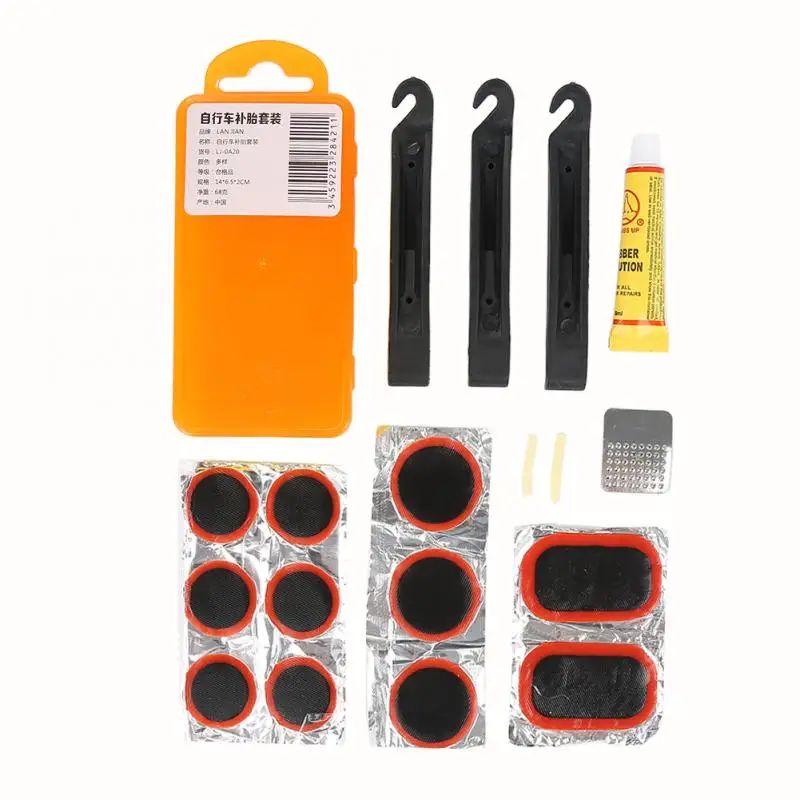 While I was waiting for the test Dargo, the same cross... 13069 7 16909/13/2022
While I was waiting for the test Dargo, the same cross... 13069 7 16909/13/2022
Test drives / Test drive Motor from Mercedes, emblem from Renault, assembly from Dacia: test drive of the European Logan 1.0 It would seem that what's new can be told about the second generation Renault Logan, known to every Russian taxi driver, as they say, up and down? However, this car has... 11434 ten 41 08/13/2022
Test drives / Test drive Geely Coolray vs Haval Jolion: Free Cheese? If! Do you want to buy a car today with a full warranty, on credit at an adequate rate, without wild dealer markups? Now this is still a task, because a full-fledged chain of "representation - s.